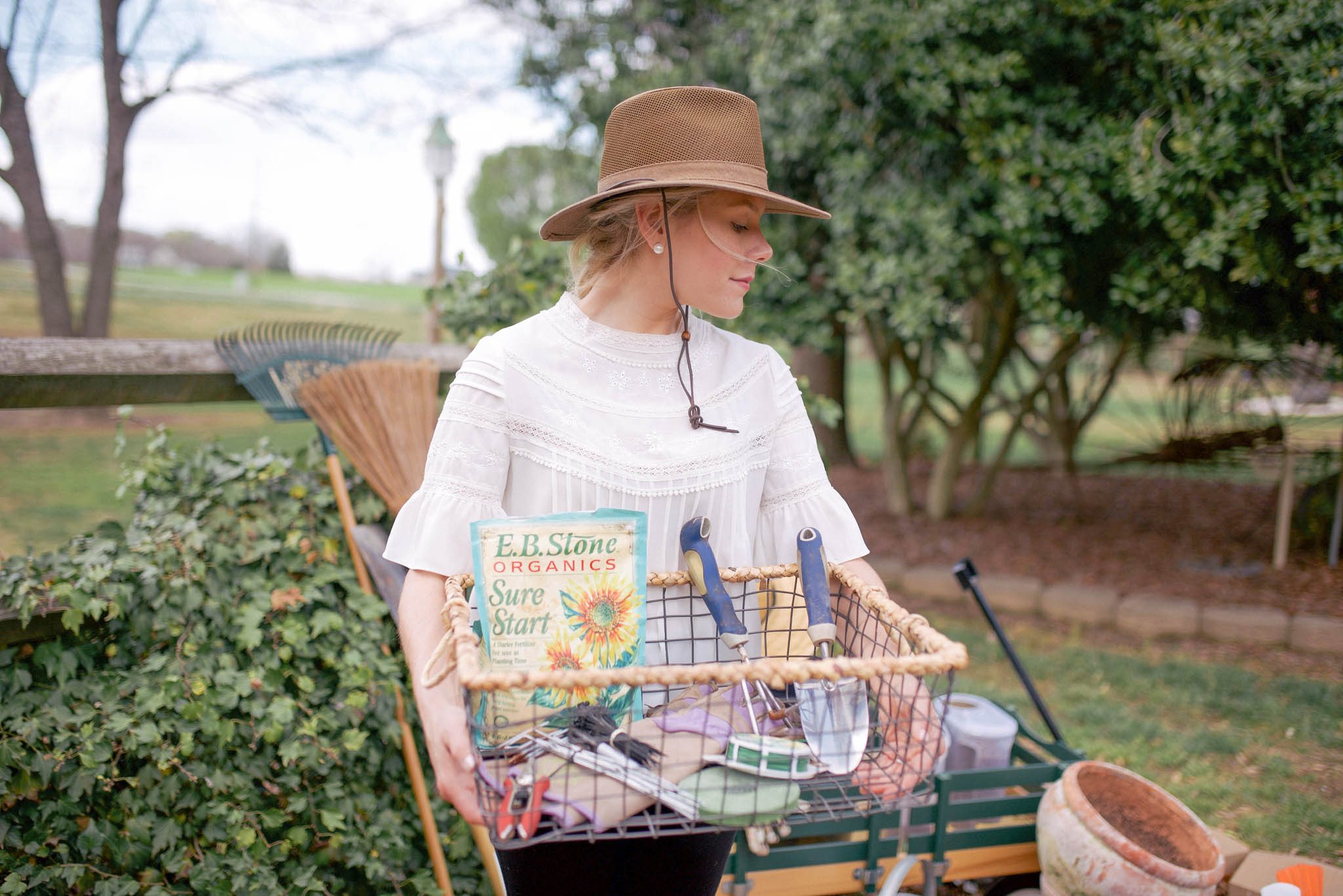
Outfit details:
PANTS | TOP (Old, similar here, here + here) | BOOTS | LIPS | HAT
Hi everyone, Justin and Taylor-Rae here! If you’re new to Style Souffle – Welcome! Today we’re kicking off our garden series, In Full Bloom. In case you missed our introductory post, we’ve linked that for you here. As many of you may already know, one of the things we love most about homeownership is having a yard to landscape and maintain. On any given afternoon or weekend, you will likely find us putzing around our yard, visiting a local nursery or on our back patio researching our next plant purchase (it’s always evolving here at the Drake household).
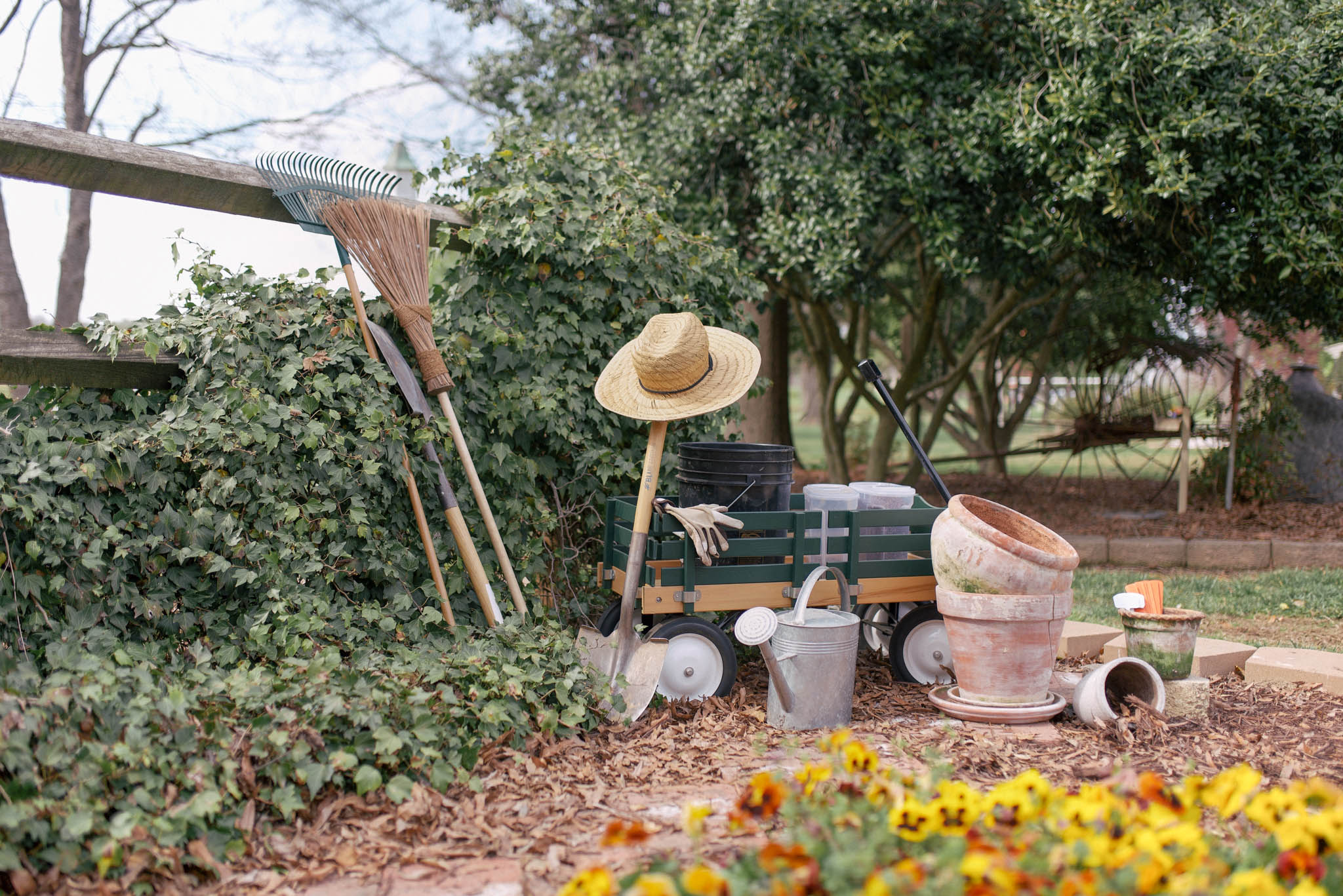
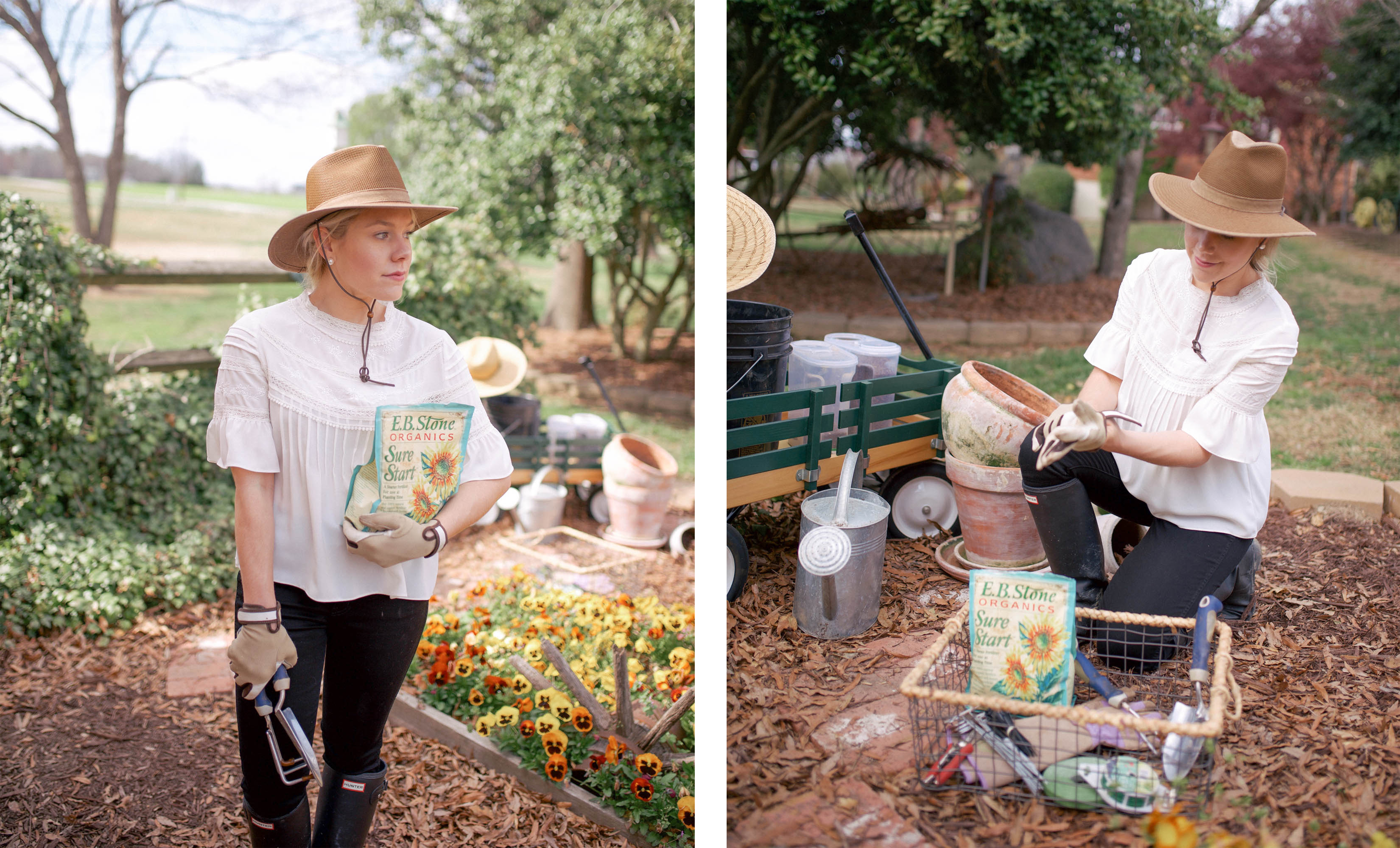
Over the course of our five post series will discuss the fundamentals of gardening. Having a basic understanding of a plants size, characteristics and needs are altogether key to building a beautiful landscape and bounty of blooms all season long. While we’re no experts on the subject, we have invested a great deal of time and energy in our own garden and have learned one too many things the hard way. Experience really is the best teacher! Our hope is that this series will provide you with a strong foundation of knowledge needed to build the garden of your dreams. So wherever you are on the garden path, we invite you to join us and countless others cultivating more beauty with seasonal blooms.
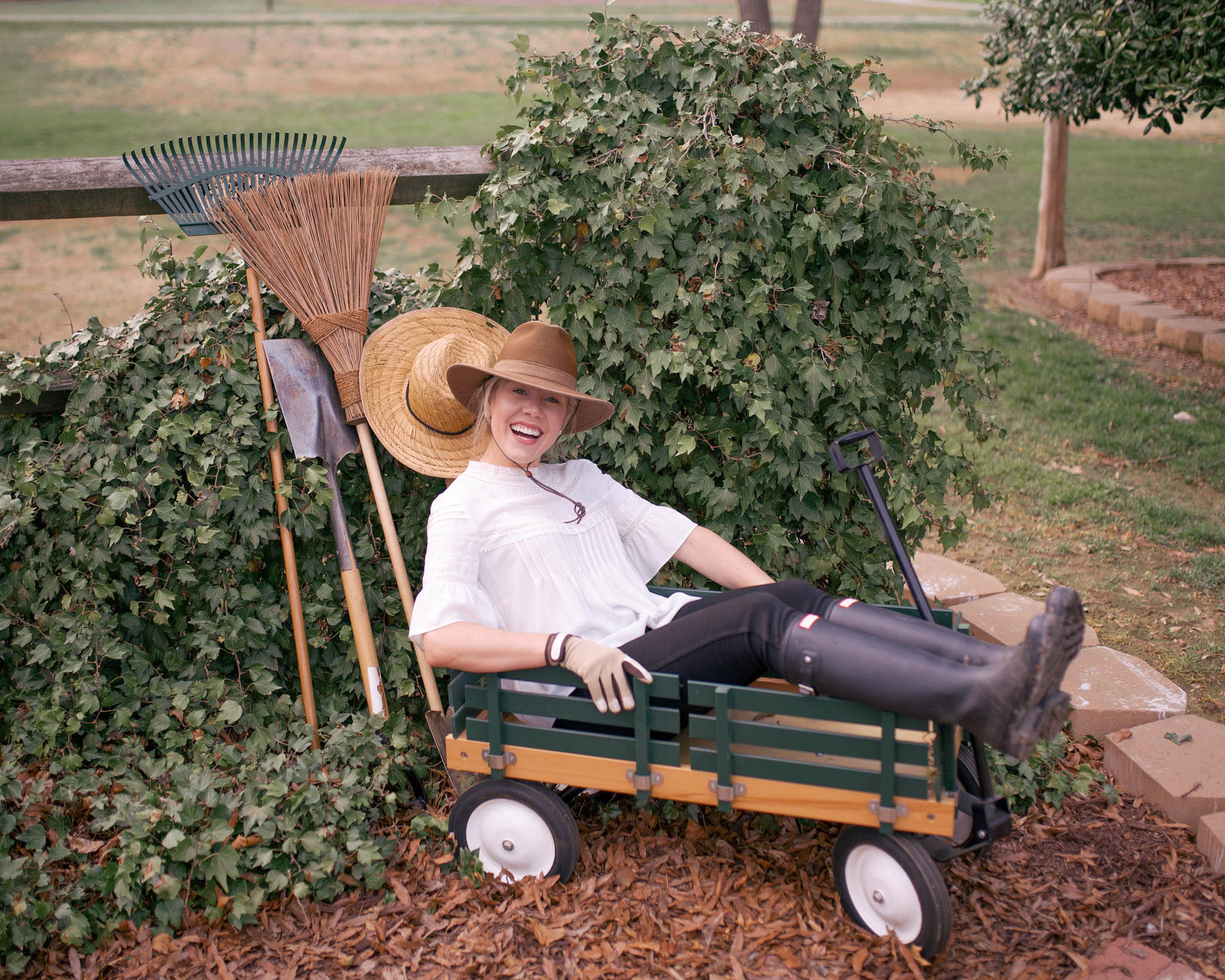
To kick things off we’re sharing our most used and recommend tools followed by a garden glossary. There are all sorts of terms you will hear the more you garden. So to ensure you soak up as much information as possible when reading future posts, we felt a short vocabulary lesson early-on would be most helpful. If you’re new to gardening or have a self-proclaimed “non-existent green thumb”, this post is for YOU! Below we’re also sharing what we’ll be covering in next weeks post – it’s my favorite in the series!
TOOLS OF THE TRADE
Having the right tools for the job makes tasks go faster. We’ve tested and replaced dozens of different tools in search of the perfect ones. While the “can’t-live-wihtout-it” tool will vary from gardener to gardener, region to region and season to season, the following are what ‘we’ think every gardener needs in their arsenal. (Note: We built our collection over time, so please don’t think you need to run out and purchase everything at once that is included on our list!)
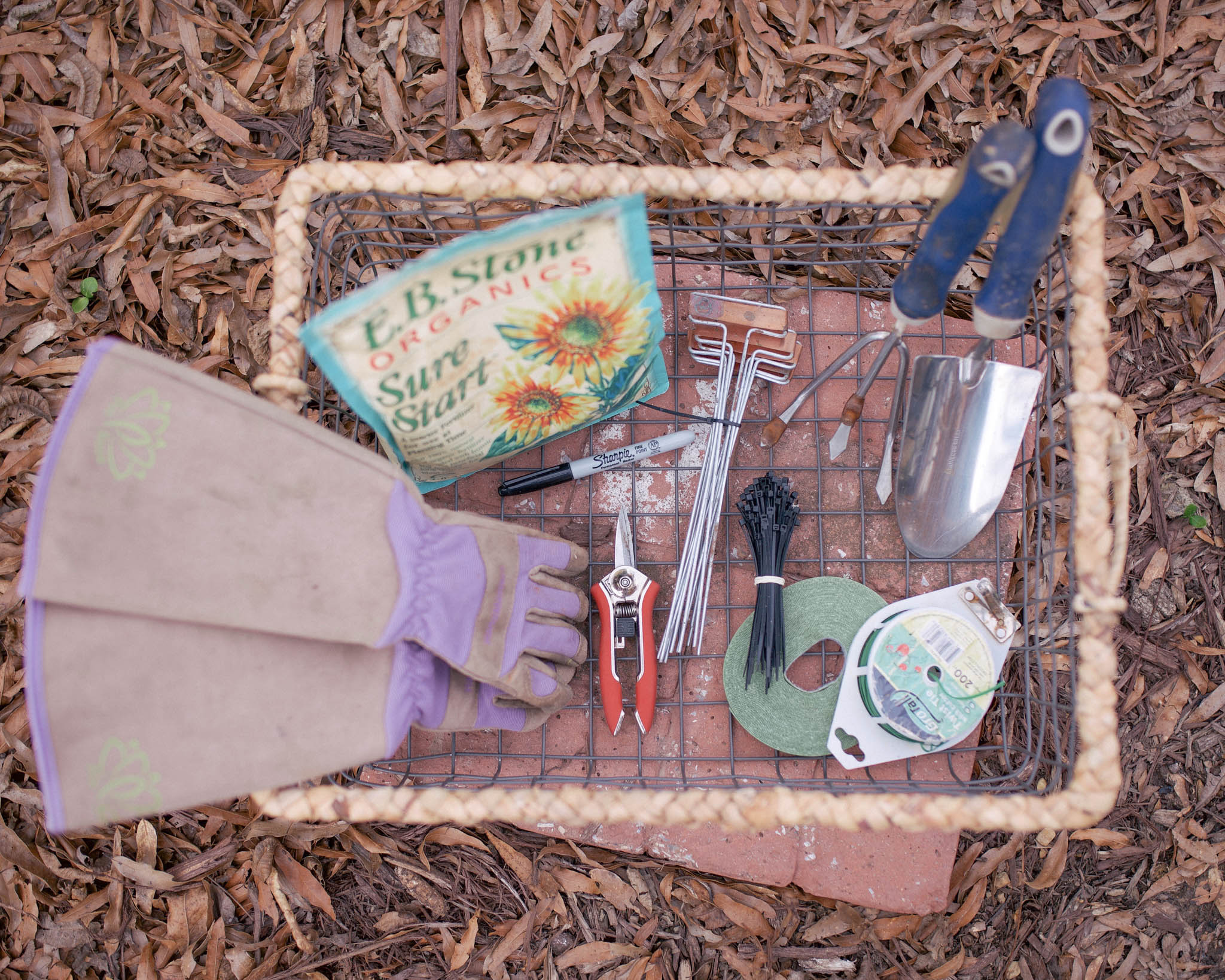
BACKPACK SPRAYER – We use two 4-gallon GroundWork backpack sprayers for applying liquid fertilizers and weed control. Our home sits on a heavily wooded, half-acre lot, so having a battery-powered backpack sprayer has been the most ergonomical solution. Beforehand, we were using a pump sprayer that would leave our hands covered in blisters. Why two? We recommend designating separate sprayers for fertilization and weed control (clearly labeling each), as you don’t want to mix solutions nor kill your entire lawn because you accidentally grabbed the wrong sprayer from the shed. For smaller lawns and gardens, we recommend the Spectracide Accushot Sprayer to control weeds and unwanted grass. The solution comes with an already attached continuous sprayer for more accurate results.
BOOTS – Ones that actually function, you know, in the dirt. Rain boots have thick rubber soles and are durable, waterproof and easy to clean. They also provide protection around your ankles! Without being stereotypical, Hunter rain boots are actually quite comfortable and our preferred choice. In fact, our neighbors call me (Taylor-Rae! Hi!) “red” because I’m always in my red Hunter boots. Now that we have started flower farming at my in-laws, more on that in a future post, we make sure to have a pair in our car at all times.
GARDEN CADDY – We actually use a bath caddy. Fancy, no! Functional, yes! This plastic container has sectionals that holds and organizes all of our pruners, sheers, garden tape, twine and anything else we need, and keeps us from having to make multiple trips to the garage! When pruning bushes (we have a whole post dedicated to roses) or hand picking weeds, we also carry along a 5-gallon bucket to place unwanted or dead clippings.
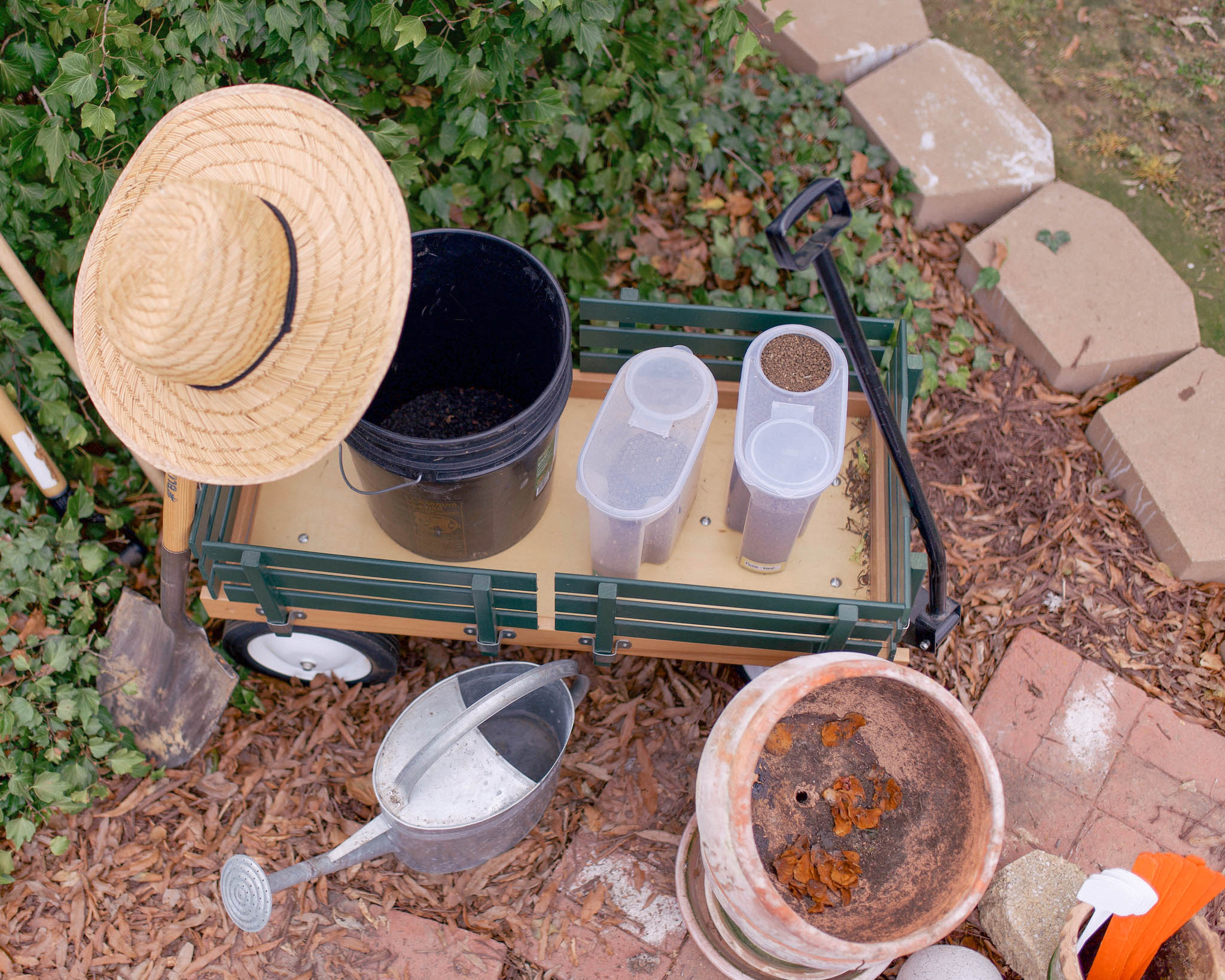
GLOVES – Every good gardener owns a pair; together we own five. Lightweight nitrile gloves are our go-to! They are durable, breathable and easy to clean. Leather gloves are great for cleaning out overgrown flower beds whereas these extra-long thornproof gloves keep our hands and arms protected when pruning roses.
HAT – We couldn’t garden without one! It’s important to protect your skin!
HOLLY-TONE (Espoma) – Holly Tone is an organic fertilizer for acid-loving plants, such as hollies, azaleas, camellias, evergreens, hydrangeas, dogwoods, blueberries, strawberries and rhododendrons. It’s a slow-release granular fertilizer that is to be massaged around the root of the plant. We can’t keep enough of this stuff in our garage!
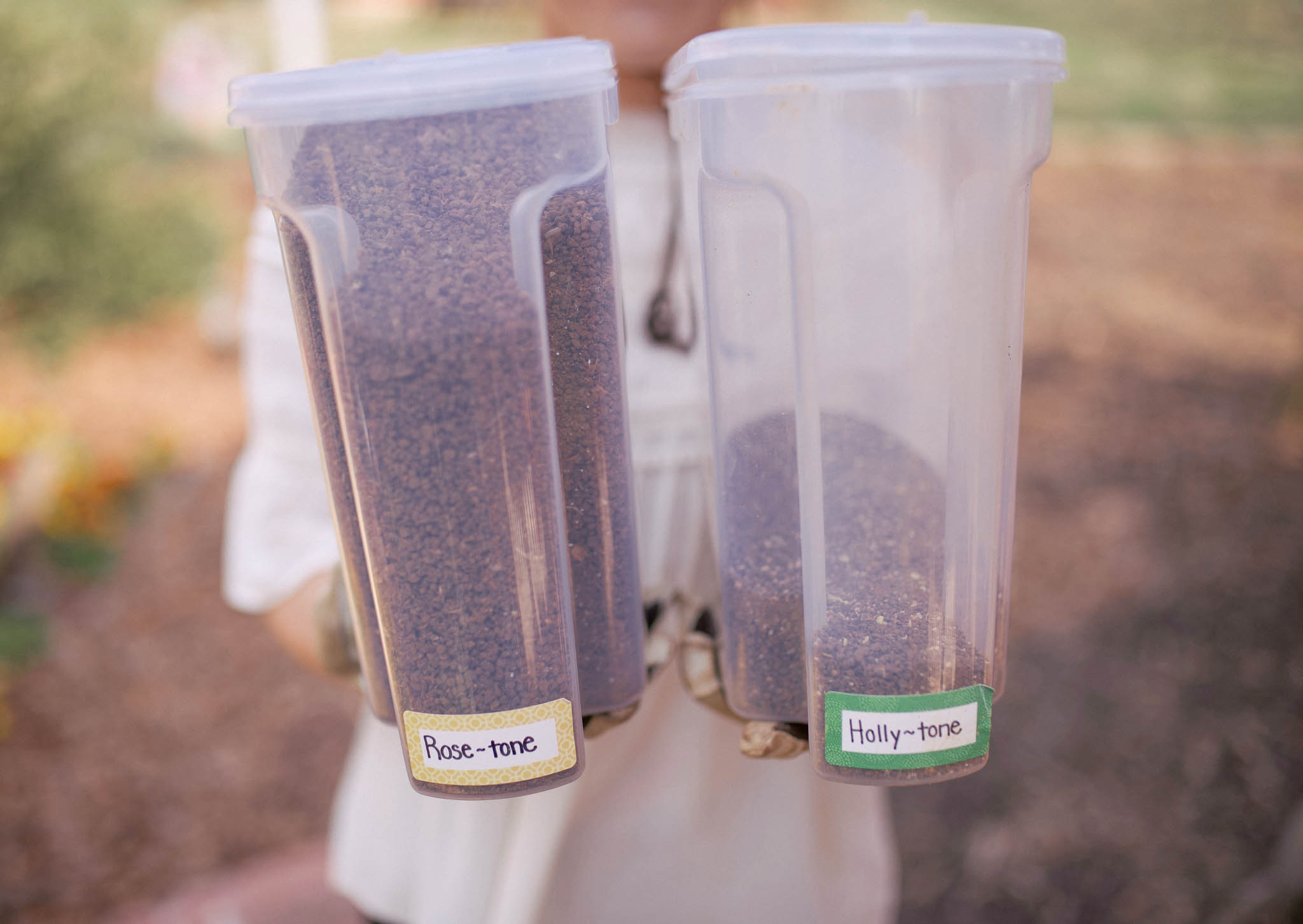
HORI HORI KNIFE – We love this knife for hand weeding, cutting through roots of older potted plants and making room for new ones.
PRUNERS – A pair of heavy-duty pruners is a must-have for pruning woody stemmed plants. My favorite are ARS, because their chrome blades resist rust and they’re ergonomically designed.
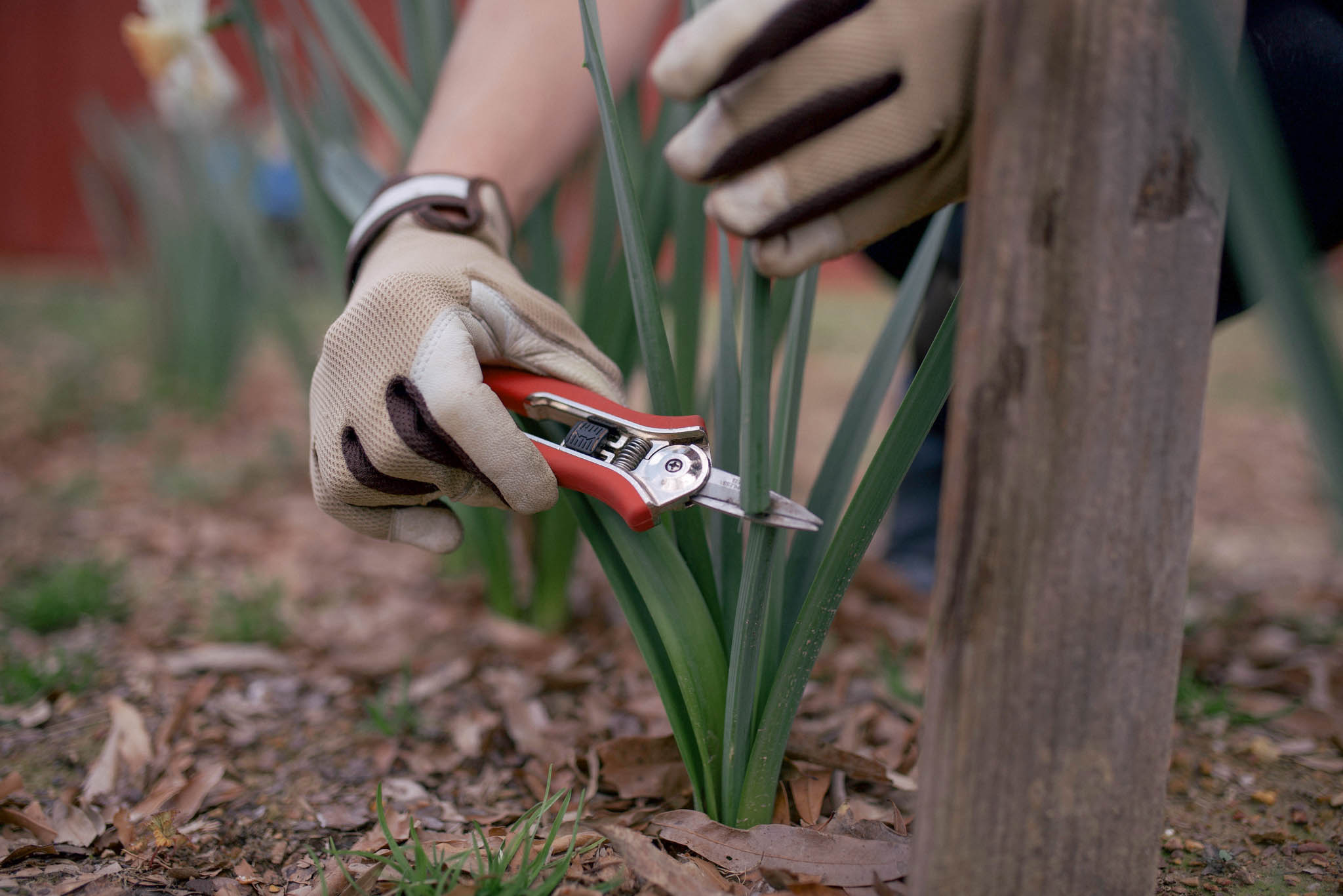
METAL RAKE – If you live in a woodsy area, a steel rake is a must-have in your tool shed. Common uses include: gathering leaves in the fall, moving mulch and collecting debris from your yard or garden.
MARKERS – Are great to have on hand to label and identify certain plants. This is especially great if you are flower farming, planting seeds or growing a herb/ edible garden.
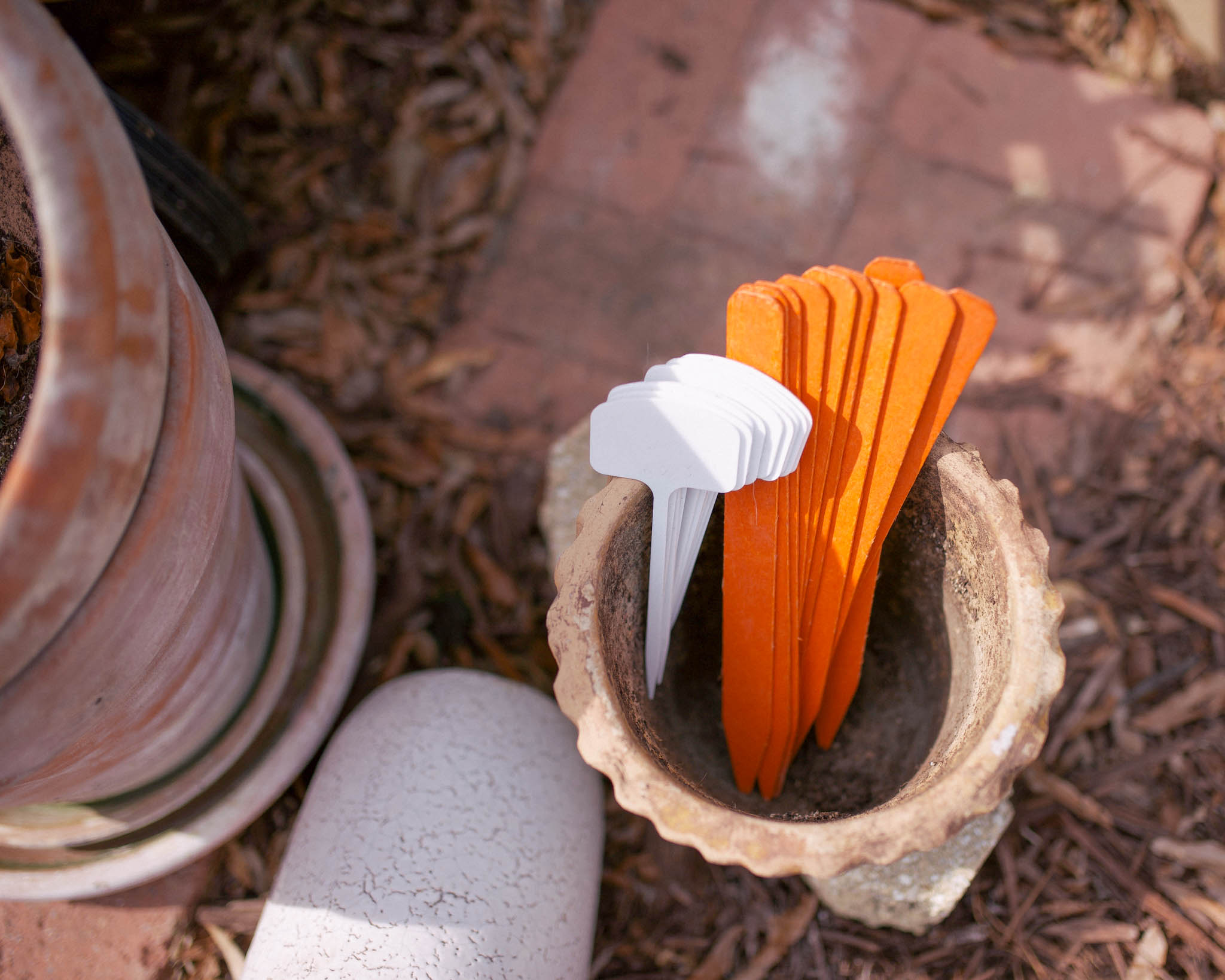
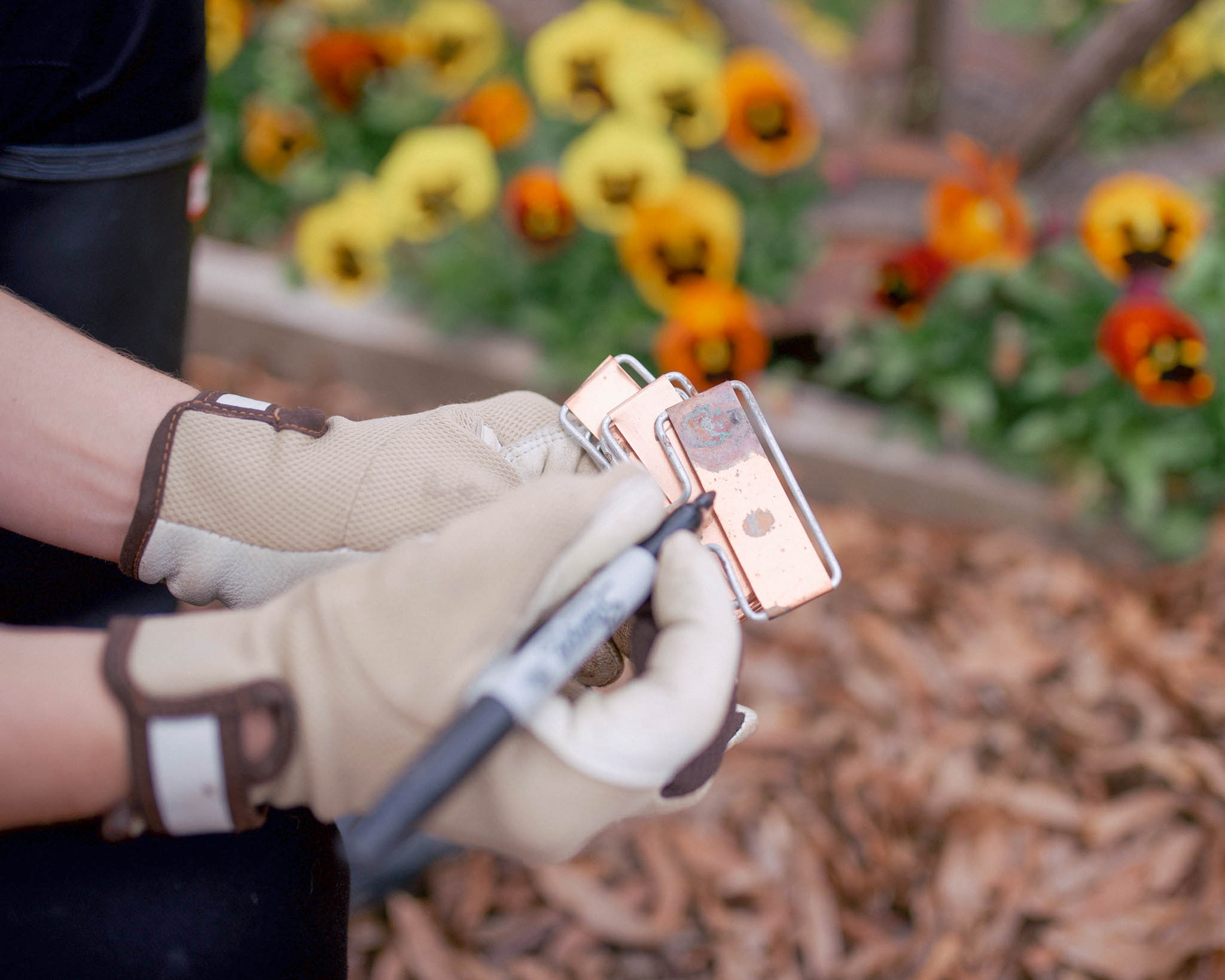
SHEERS – Sheers come in all shapes and sizes, and vary depending on your needs. Our home sets on a heavily wooded lot {one of the many reasons why we love it} with large trees that have even larger roots systems. We planted shrubs, creating a 10-20 foot hedge, throughout and around the wooded areas surrounding our home. Having “hedge shears” made removing larger roots a breeze. They are also great for pruning larger tress/ shrubs (Crepe Myrtles, Azaleas, larger Hydrangeas, etc).
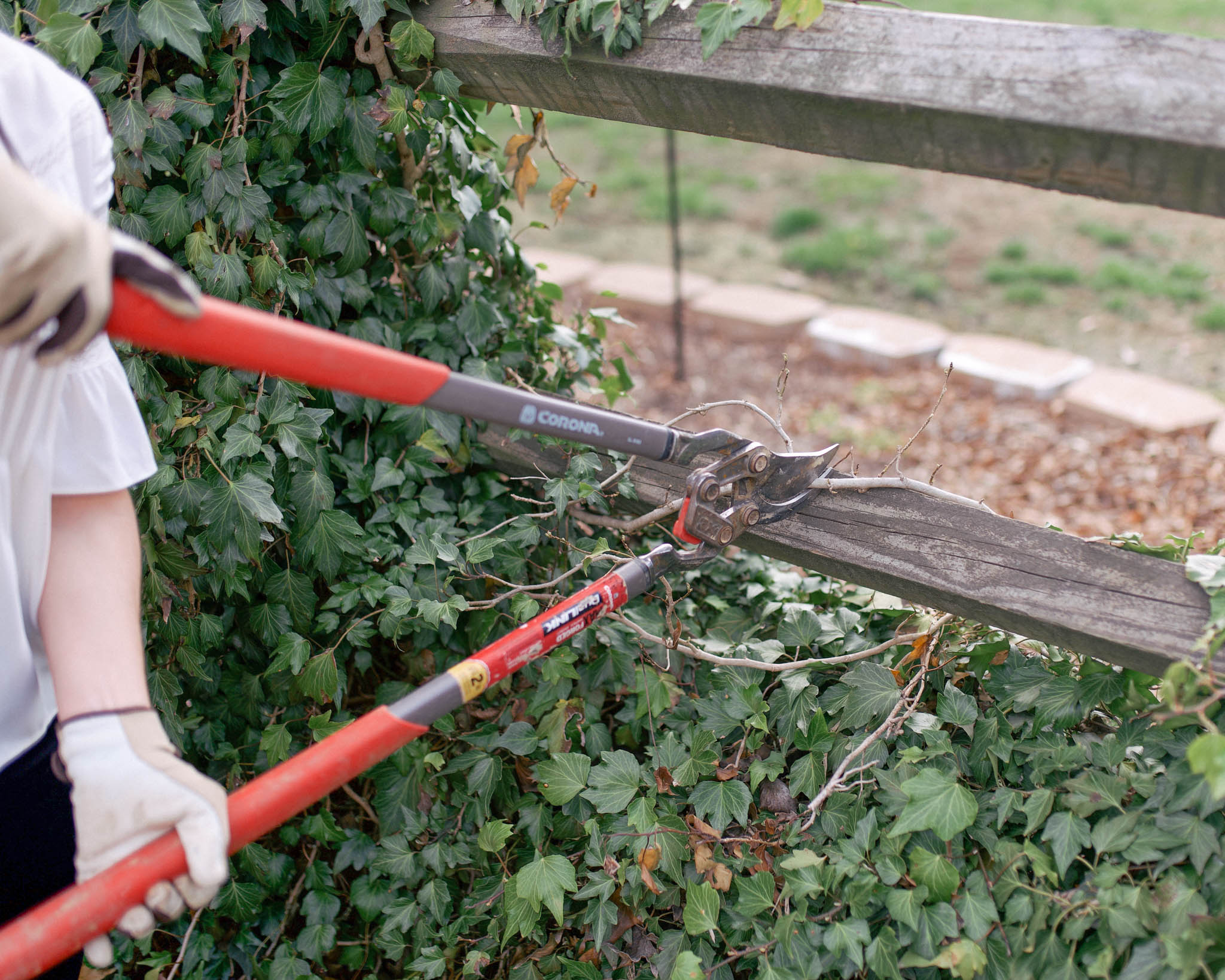
SHOVEL – Every gardener needs a good shovel! It has an array of uses, including turning beds, double digging, moving soil, prying out rocks and transplanting.
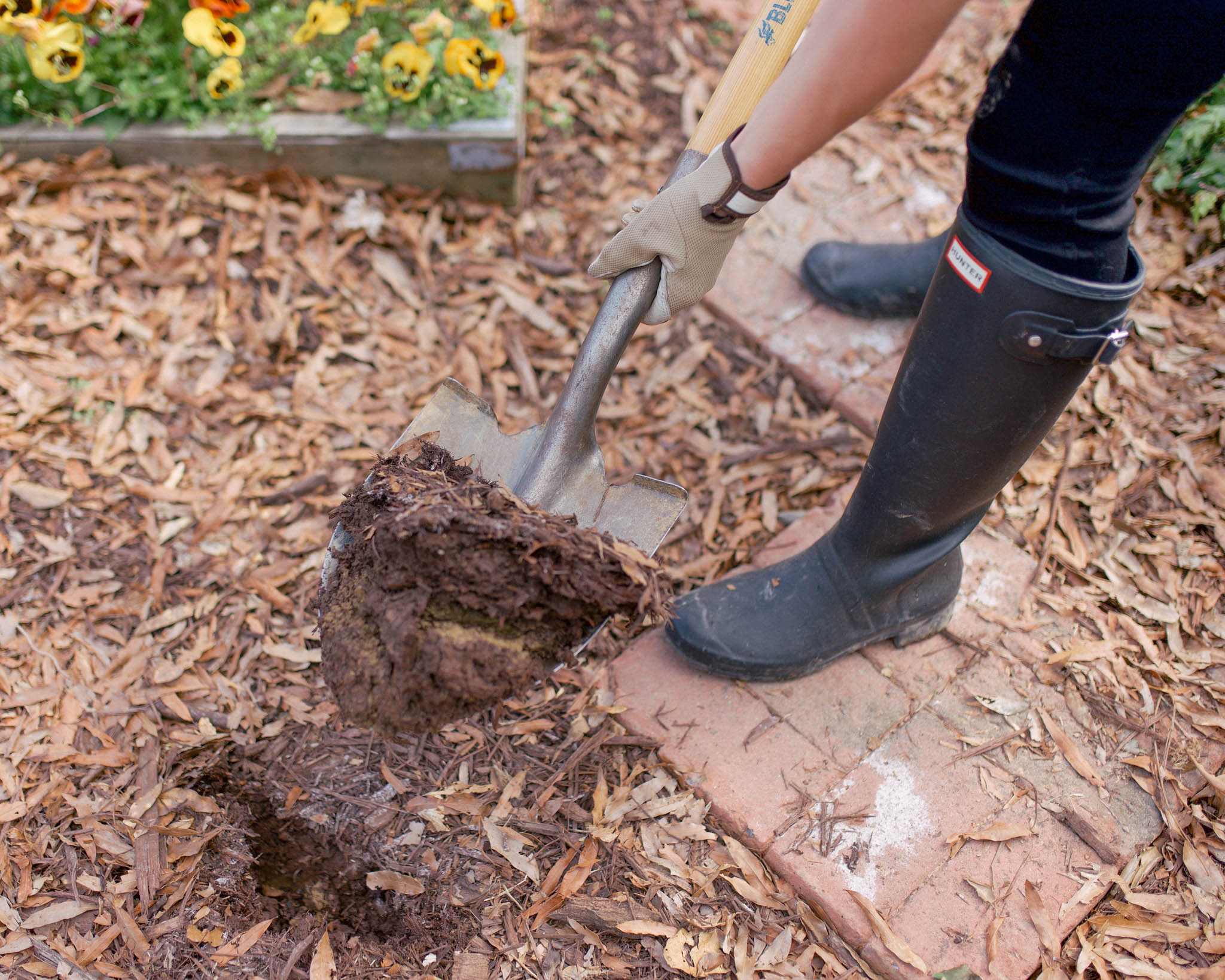
SPADE – Unlike a traditional round tip shovel, spades have a flat, straight, slightly sharpened blade that is great for slicing through soil and roots. They make edging and digging holes for trees and shrubs a breeze.
SPREADER – We use and love the Scotts Turf Builder Mini Spreader. It is large enough to get the job done, yet small enough to be stored. This is especially handy when spreading fertilizer’s on grass, which is to be done seasonally (we’ll share more in later posts.
SURE START (E.B. Stone Organics) – Sure Start is an organic fertilizer that is rich in phosphorous to help your plants develop a strong foundation for future growth. We encourage you use this when transplanting plants in the ground.
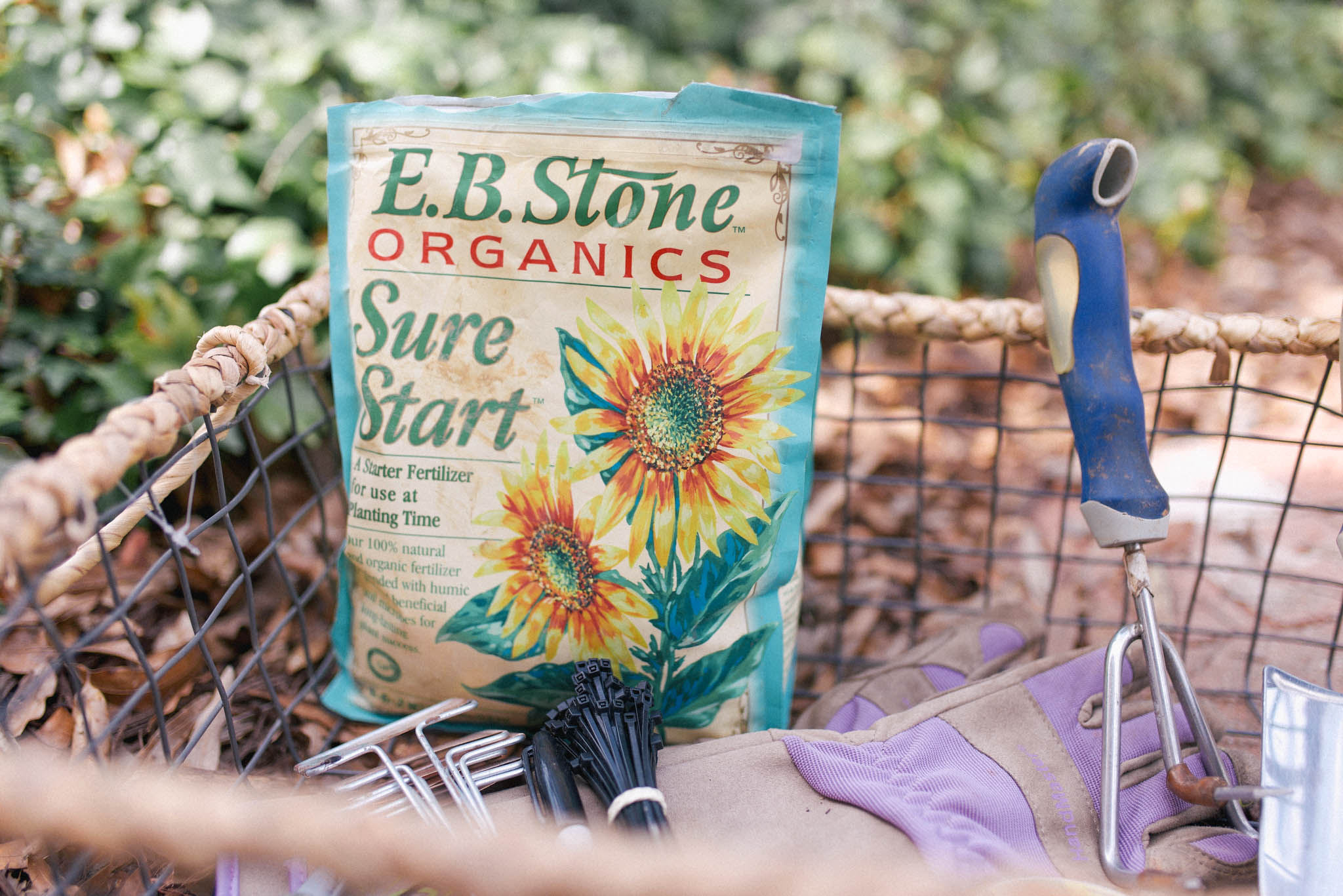
WATERING CAN – This is especially great for back patios, balconies and smaller spaces (most shrubs and flowers prefer bottom watering; we’ll cover this later in the series).
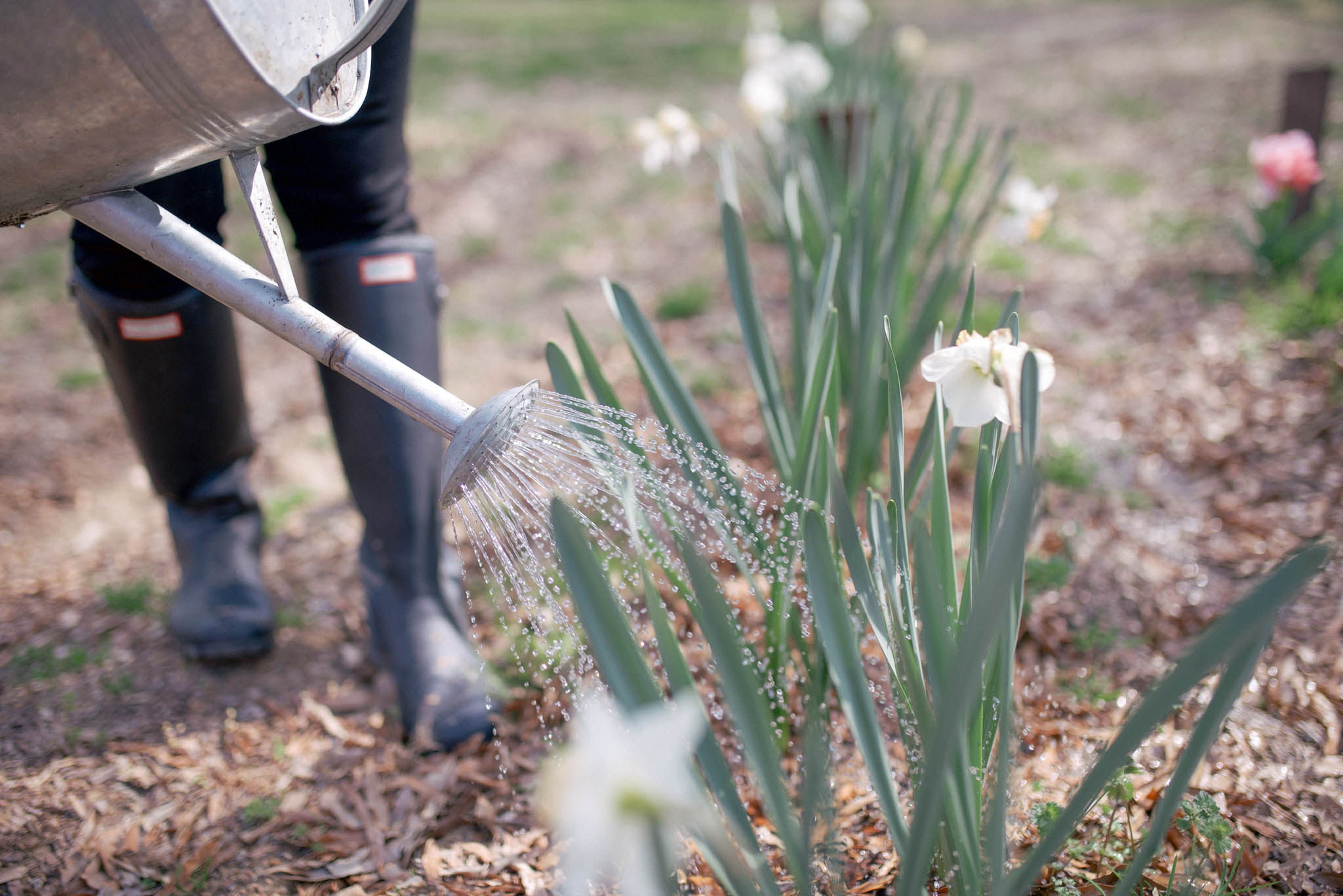
WHEELBARROW – The 6 or 10-cubic-foot wheelbarrow is the perfect size for moving large amounts of soil, mulch and tools, but still small enough to be manageable.
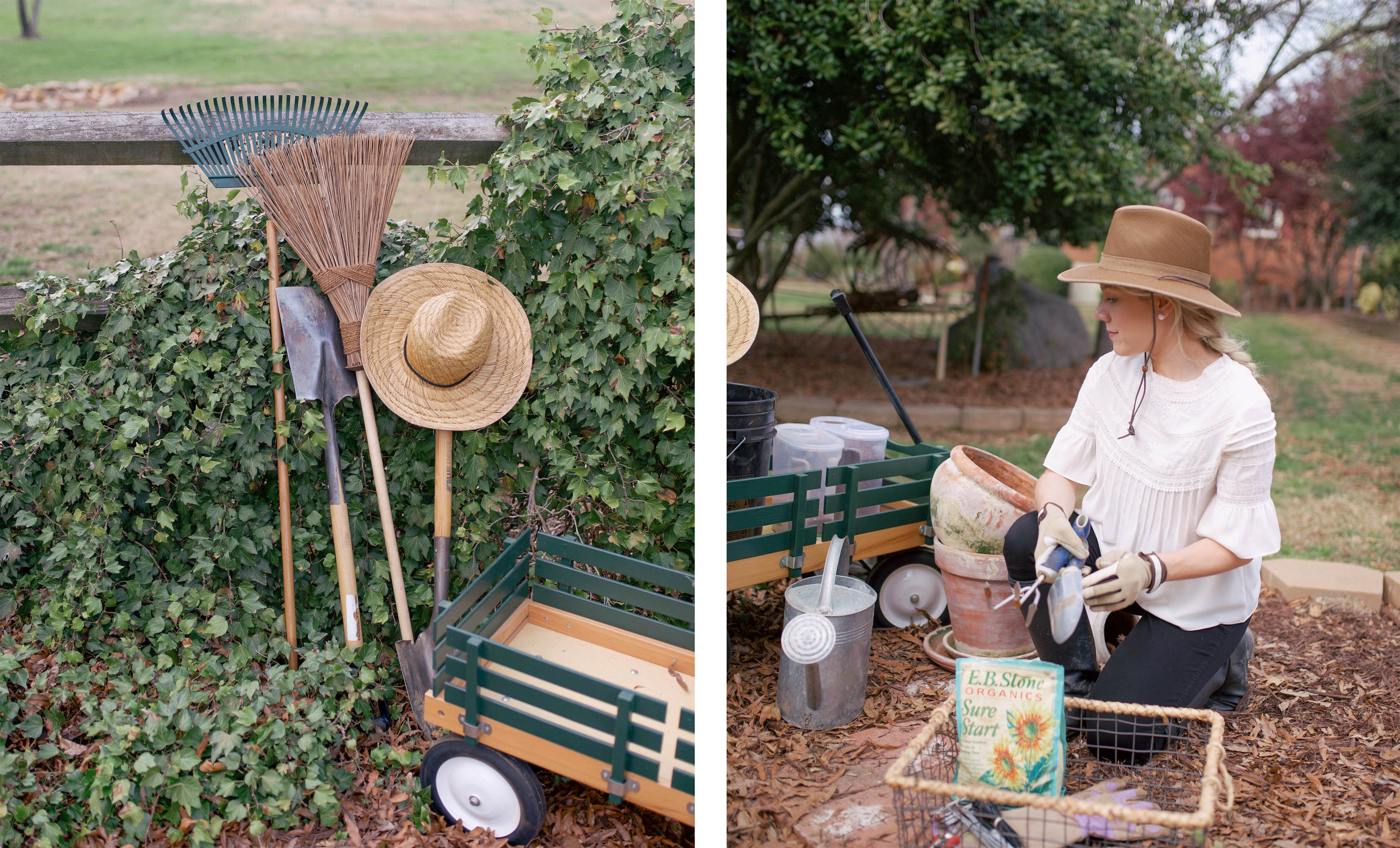
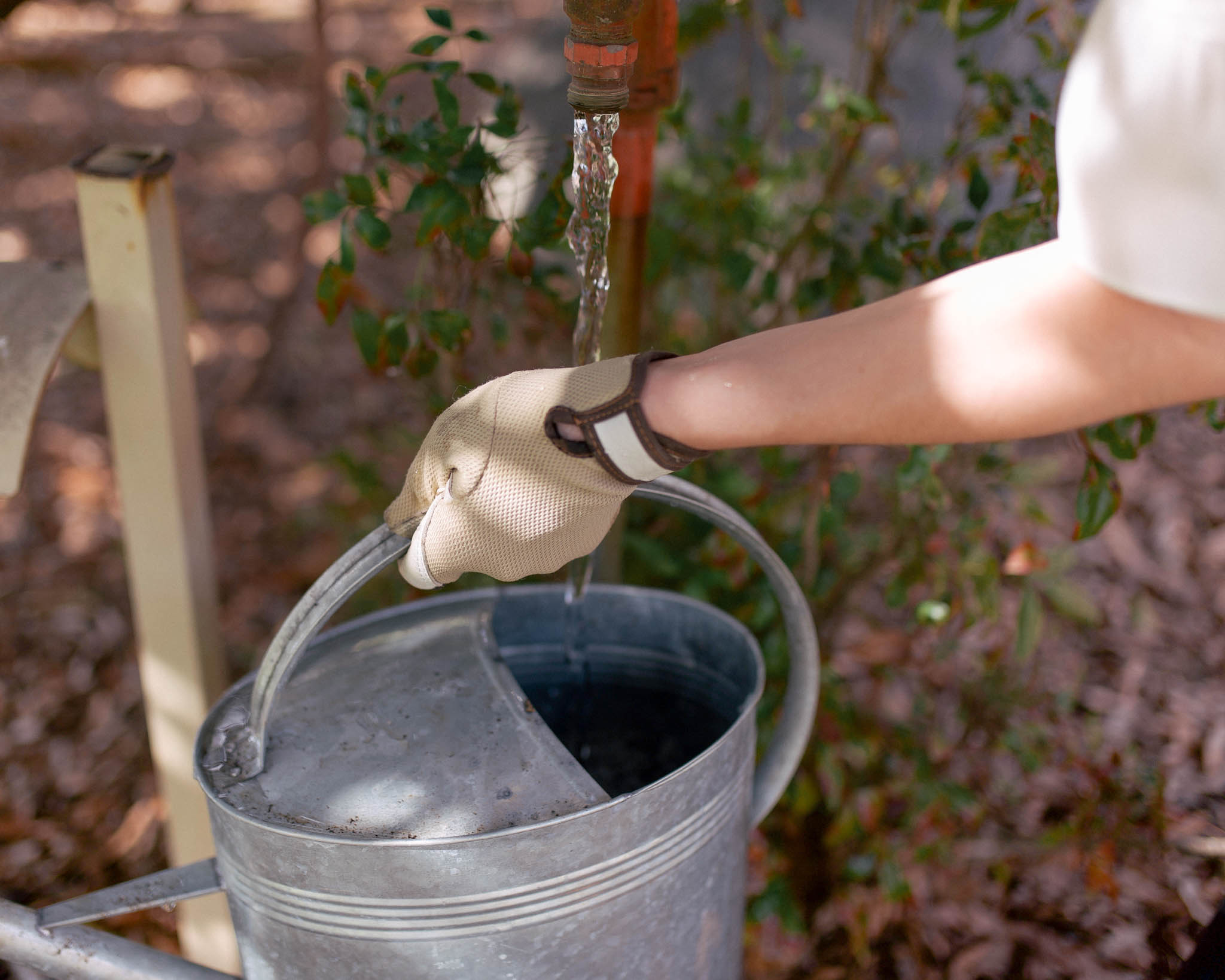
GARDEN GLOSSARY
Types of Plants –
Annual – a plant that completes its entire life cycle in one year
Biennial –a plant that takes two years to complete its entire life cycle
Perennial – a plant that grows for more than two years
Deciduous – sheds or losses foliage during a particular season (most often winter)
Evergreen – having green leaves throughout the entire year, the leaves of the past season not being shed until after the new foliage has been completely formed
Seeds (Indoors) –
Harden off – slowly acclimating seeds to the outside elements by placing them outside for a few hours one day, four hours the next day and progressing daily until they are ready to be outside all day and then planted outside to continue their life cycle
Rootbound – when a plant’s roots have outgrown the pot it is in and can no longer stretch and expand due to being trapped, or bound, inside the pot
Transplants – immature plants that are often started inside in small trays before being put in the ground outside (these are the small plants you see for sale at garden stores)
Seeds (Outdoors) –
Broadcast – sprinkling down seeds without purposefully placing them in a spot
Direct Sow – to plant a seed outdoors, in the area that the plant will remain for its entire life cycle
Sow – a term used for planting seeds
Weather Gardening Terms –
Bolting – when a plant goes to seed due to increased daylight hours and/or high temperatures (the plant puts all of its energy into reproducing and stops putting energy into the edible parts of the plant, potentially causing them to become bitter)
Cool season crops – crops that grow in cool temperatures, usually in spring and fall, and bolt in high temperatures
Frost date – dates for your average first and last freeze – find yours by heading here and clicking on Frost Calculator
Full sun – at least 6 hours of direct sunlight (many warm-season crops need 8-10 hours of direct sunlight)
Growing season – the time between the last average frost and the first average frost for your area (This is important when determining if a crop is right for your area because each crop has a certain number of days until it reaches maturity – usually found on the)
Hard Freeze – when outside temperatures drop below 25°F for four, or more, hours (most plants need protection at 25°F or below)
Hardiness zone – a geographic zone based on the minimum temperatures of the region and the plants that can survive those temperatures
Light frost – temperature drops below 32°F (many cool season crops become sweeter after a light frost, such as kale and carrots)
Warm season crops – crops that germinate and grow in warm weather and will not survive a freeze (most do not do well under 50°F)
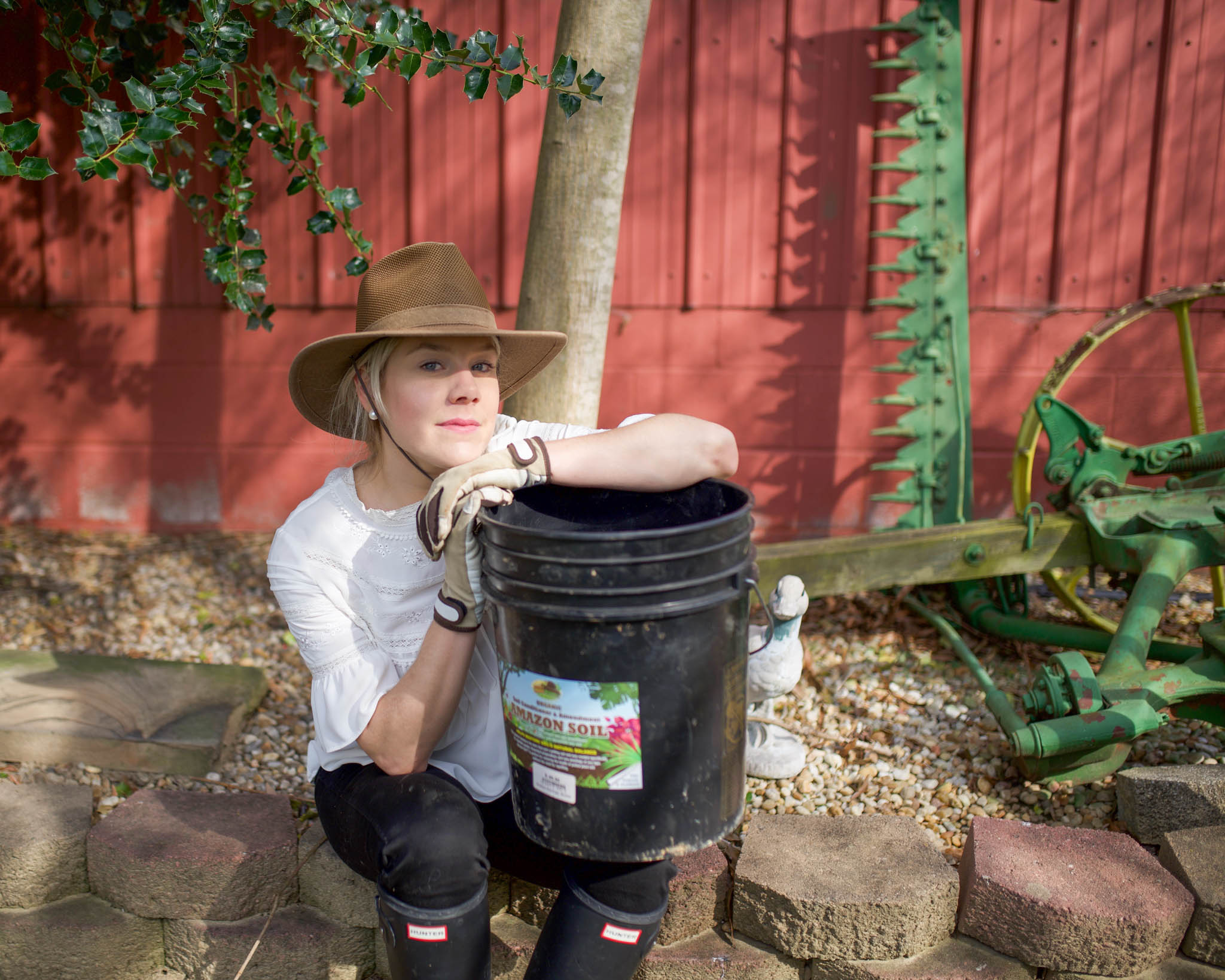
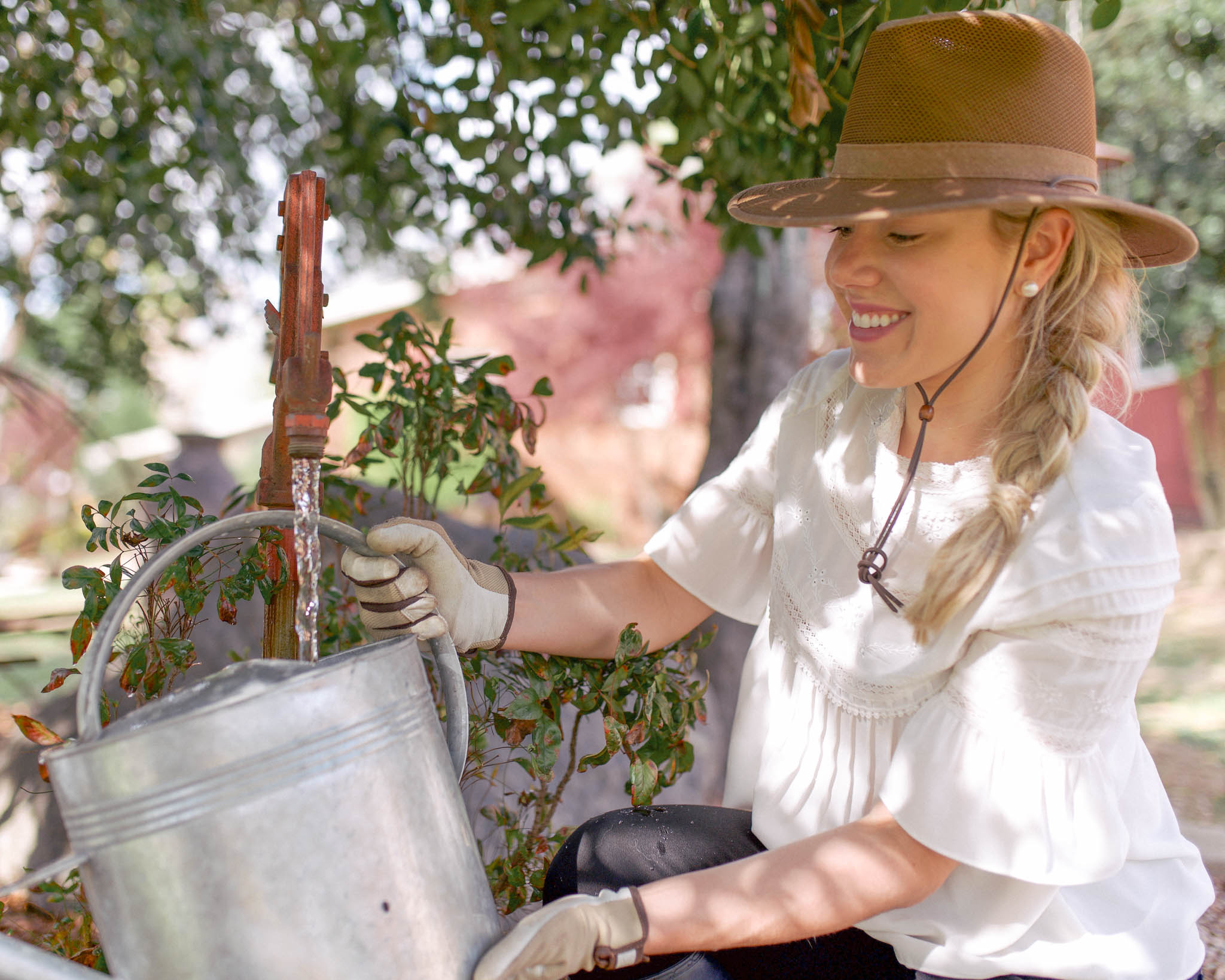
Our goal in this series is for each post to be a succession of the next! We will reference this post often when speaking to specific tools and terminology. Next week we are sharing a full guide on how to create a balanced pot. In the third week, we will be diving into zones, shrub shapes and what we recommend you consider when creating a balanced hedge/ bed. Zones are tricky and if not carefully considered can cost you a great deal of time and money! We’re including beautiful water color print outs for you as well to help illustrate everything! Also, if any seasoned gardeners reading today’s post have recommendations on products or tools, please share them in the comments below!
Happy gardening,
Taylor-Rae & Justin
Like with the other posts, your feedback and participation are highly valued! We spent nearly two months piecing together the details for this series, so altogether we’ve invested a great deal of time into putting this together. We have no way of knowing if we’re on track or not, unless you tell us. I would really appreciate it if you would please take a minute and leave a comment. Even a few words would be great! I would love to know if this was helpful, what questions you still have about a specific topic, what are you struggling with, or if you have any great resources relating to the basics of gardening that you’d be willing to share.


Seriously loove this and am going to refer back to this over time! We recently planted so much stuff in our back yard but are worried we’ll do something to make it die! Can’t wait to read more!!
xo, Shelby
This is so great! I am going to live vicariously through your series since I don’t have a backyard, although I hope you’ll do a post about growing plants in planters. I’m going to attempt that this Spring (if it ever warms up) so I’ll need all the help I can get!
-Cynthia
Thanks for sharing this. This blog was amazing. And I think the knife is the best tool for gardening.